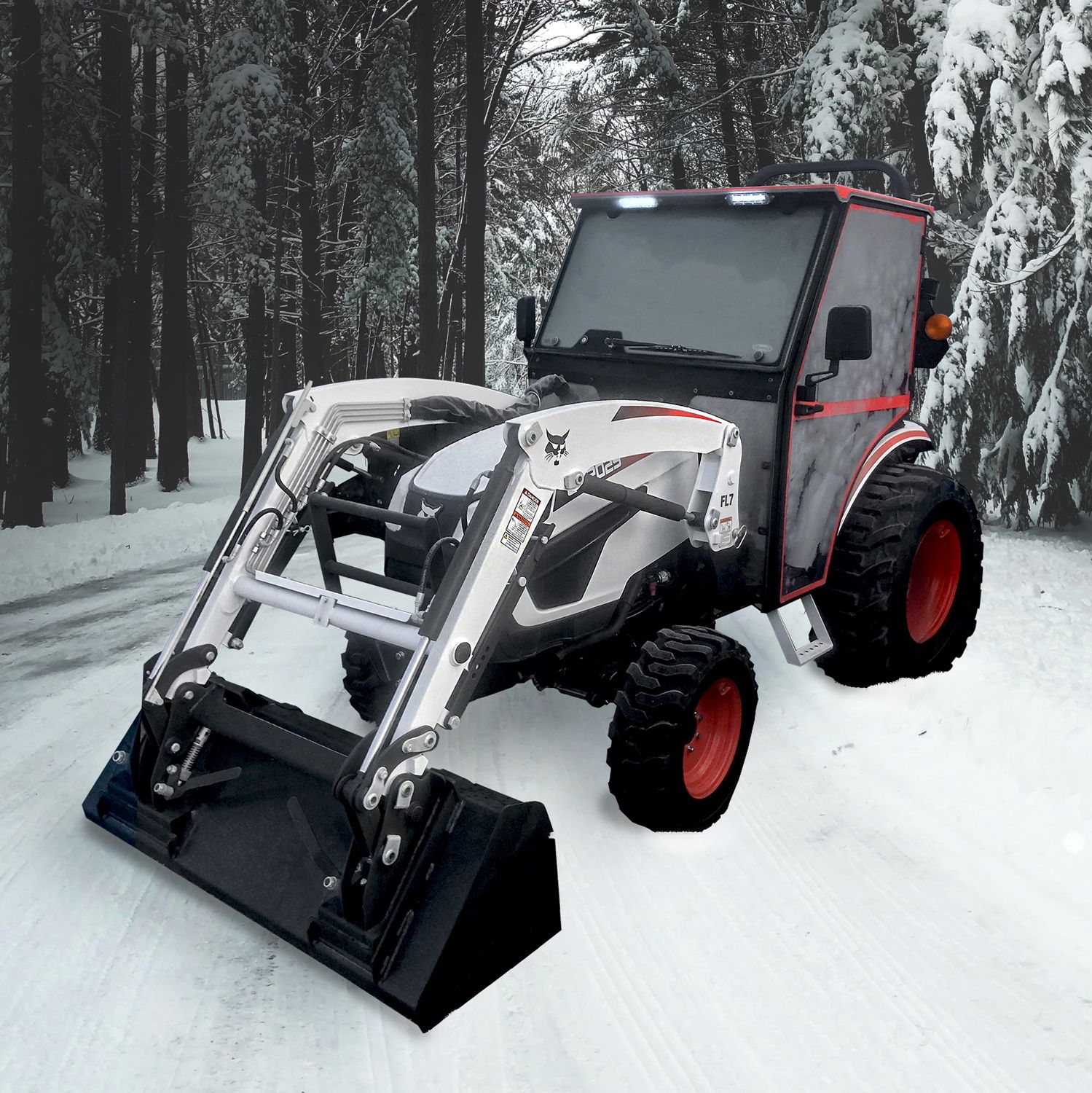Preparing your tractor for spring


Getting your tractor ready for spring can be a daunting process, but if you properly winterized your tractor in the fall, then preparing for the spring should be a seamless process.
Scout out problems
First, take a look around your tractor to spot any obvious maintenance tasks that need to be taken care of. Walk around, checking anything that stands out and looks unusual—like a broken wire or loose hardware. If you weren’t able to grease your machine as part of winterization, now is the time.
Pressure check the tires
Next, it’s time to inspect your tires. Check the air pressure of each tire, and make sure they’re properly inflated. Look for any rips, cracks, punctures or tears. If you notice any, contact your dealer’s service department.
Raise the hood
Now you can raise the hood to inspect the engine bay and belts. Just like your tires, inspect belts for cracks, missing sections and proper tension—a properly tightened belt should have around a quarter-inch of deflection.
Make sure no animals have made your tractor their home over winter to avoid any unforeseen hazards when you start up the engine.
Inspect the fluids
Next, it’s time to check the fluids: engine oil, transmission fluids and coolant. You’ll want to make sure all your fluids are at the appropriate levels, per your tractor’s manual.
Look for any water or condensation that has settled to the bottom of the fuel tank. Since water and condensation typically collect at the bottom of your tank, draining a small sample of fuel prior to firing up your tractor could avoid damage in the future. If you find that your fuel filter isn’t draining, the liquid has likely gelled in cold temperatures—time for a fuel filter replacement.
It’s important for this treated fuel to make its way through your fuel system to help boost the octane rating of older fuel and lube the fuel system.
Pro tip: Treat your fuel throughout the year—it’s cheap insurance as most additives increase fuel lubricity to keep the fuel system operating properly.
Nudge the battery
Now, check the battery, inspecting the terminals for corrosion, and tighten to be sure you have a good connection. You’ll want to plug your battery in to a trickle charger to freshen the charge.
GO!
After checking everything, give your tractor a drive around to get warmed up. A 15- to 30-minute drive can can charge up your battery and will help ensure that everything is working properly. Go through all the ranges and gears to get some oil on them and raise and lower the loader and 3-point hitch several times to lubricate the mechanical system of the tractor.
Tags:Weekend Farmer

Acreage Life is part of the Catalyst Communications Network publication family.














